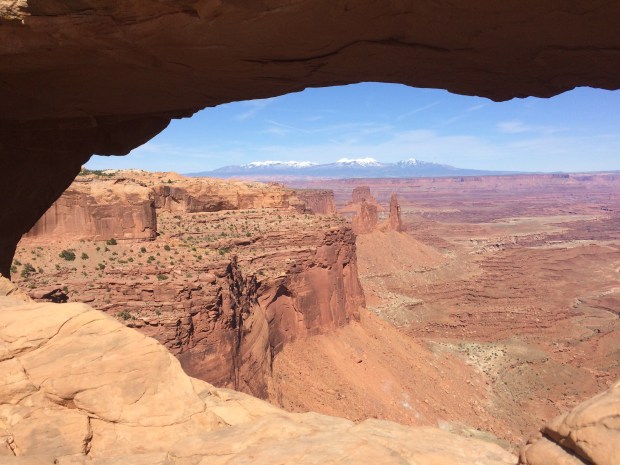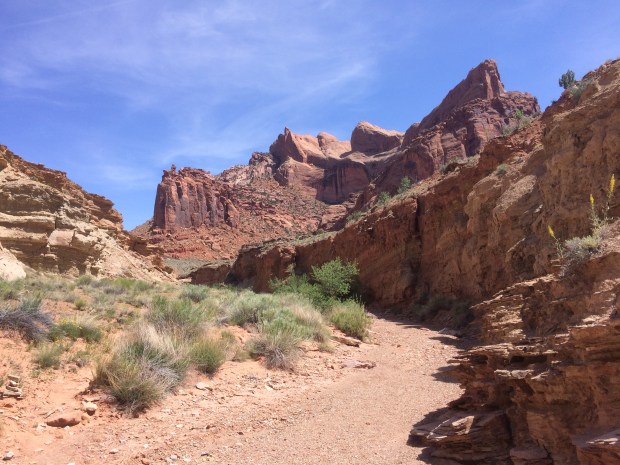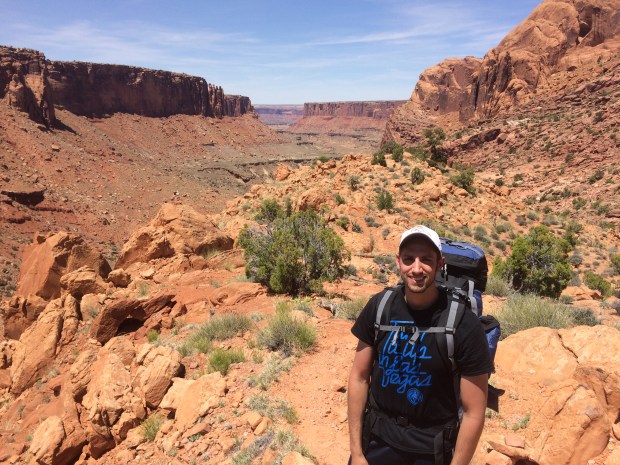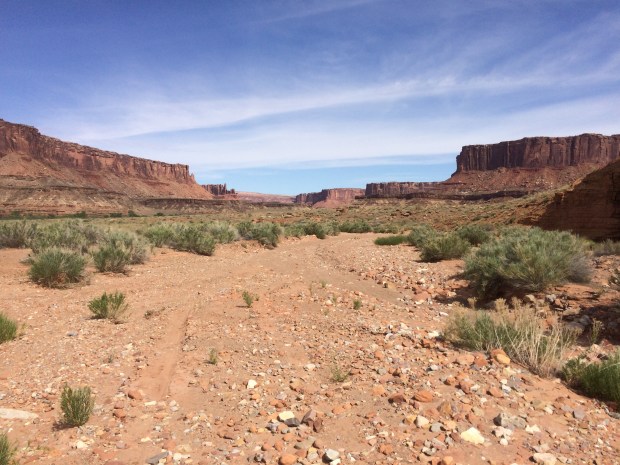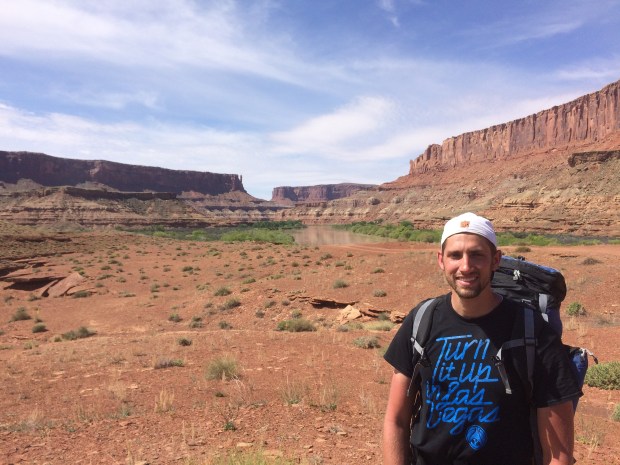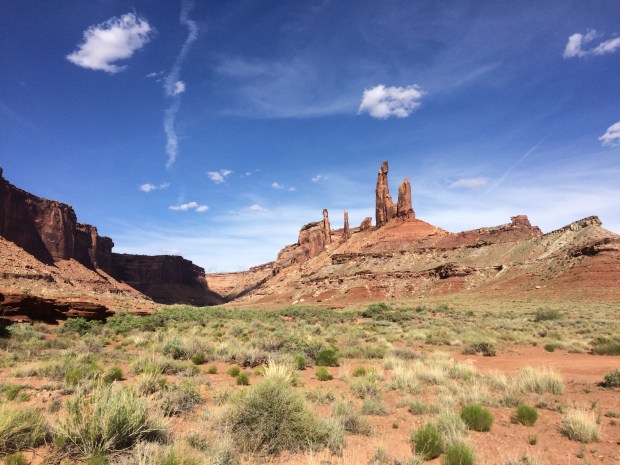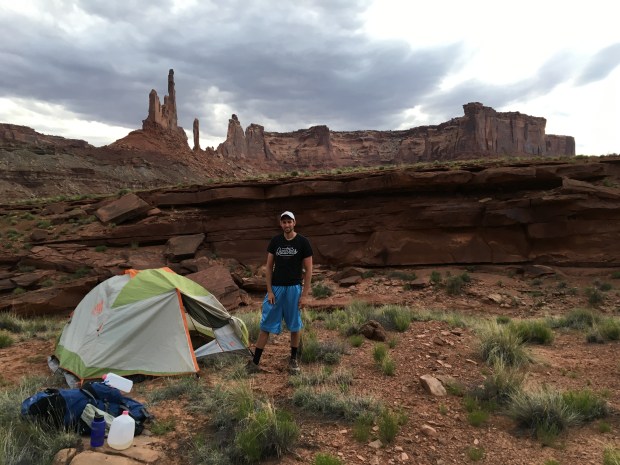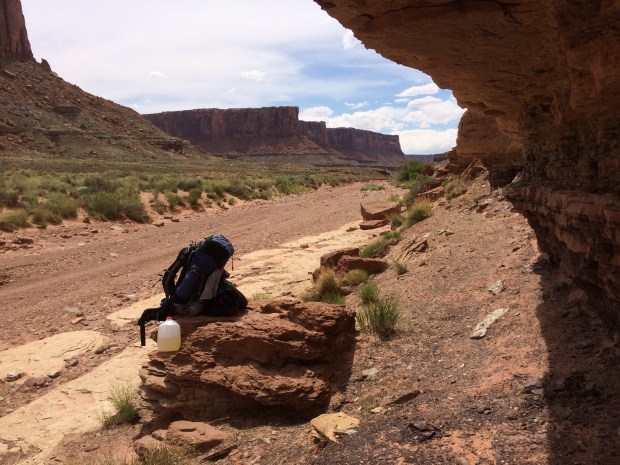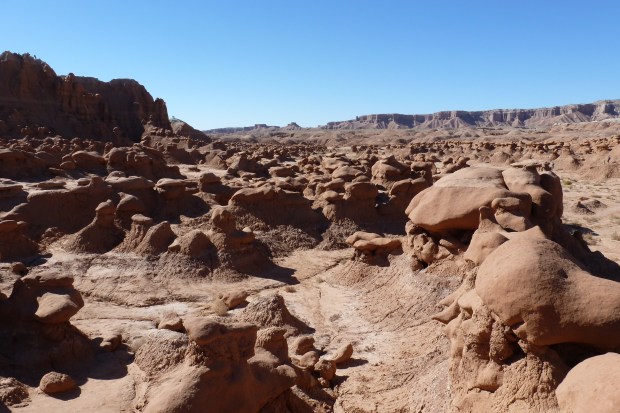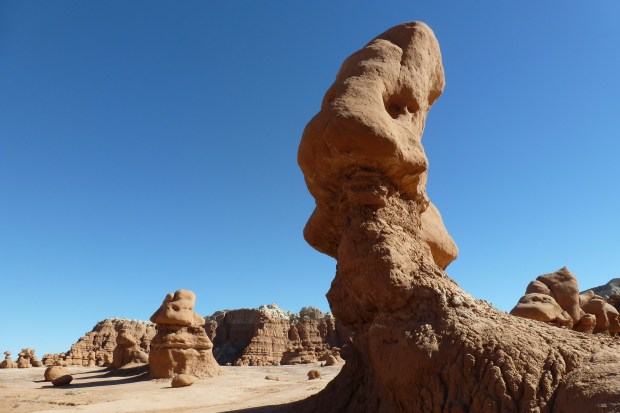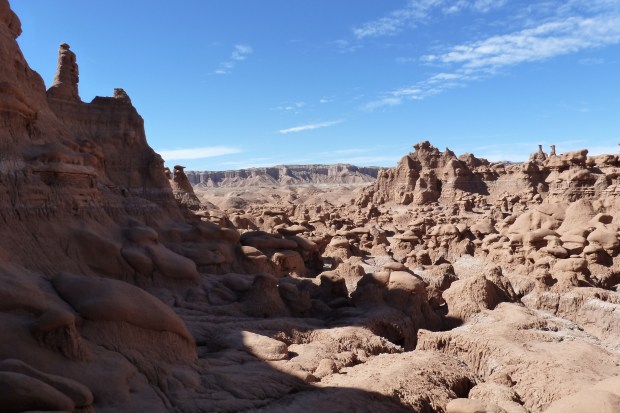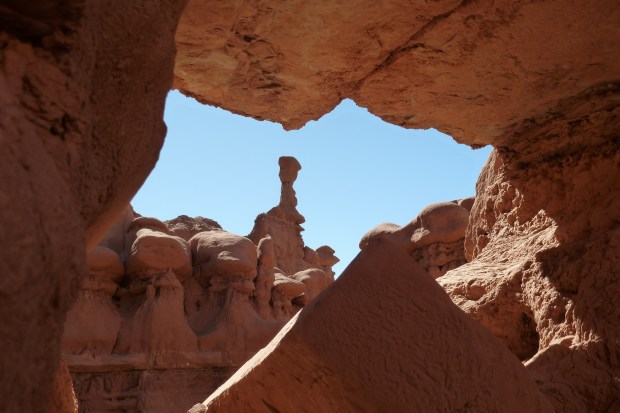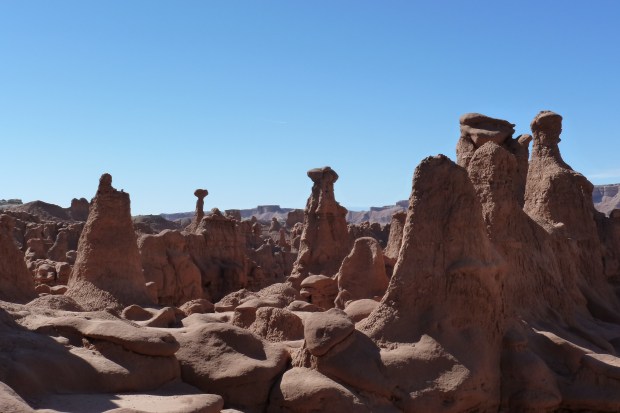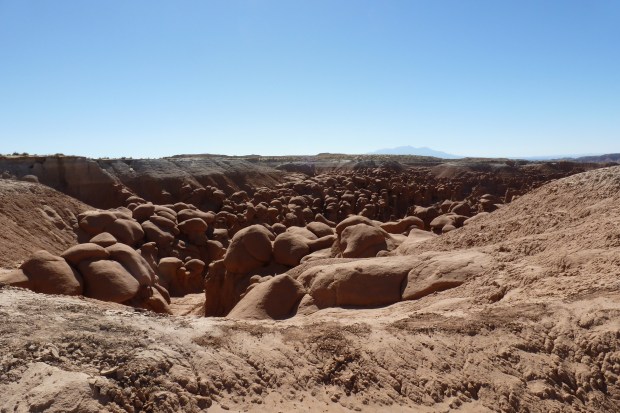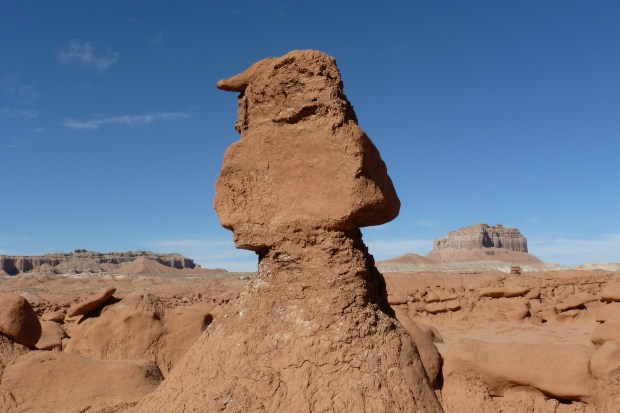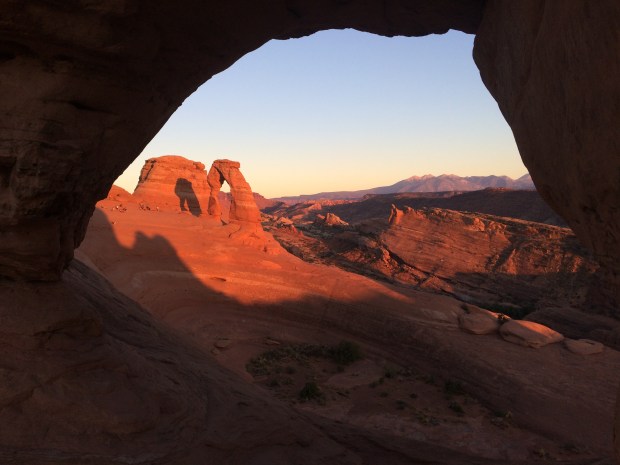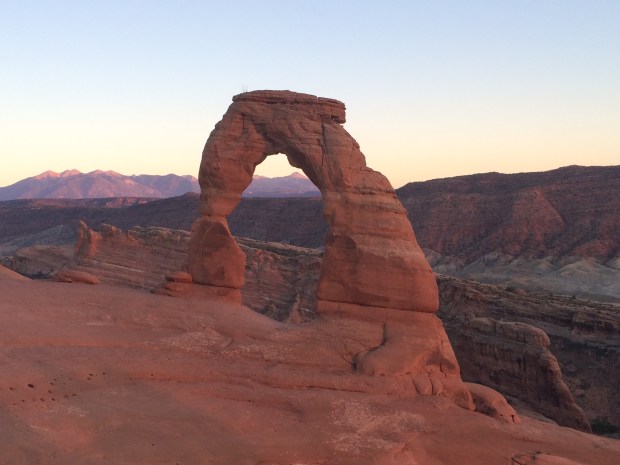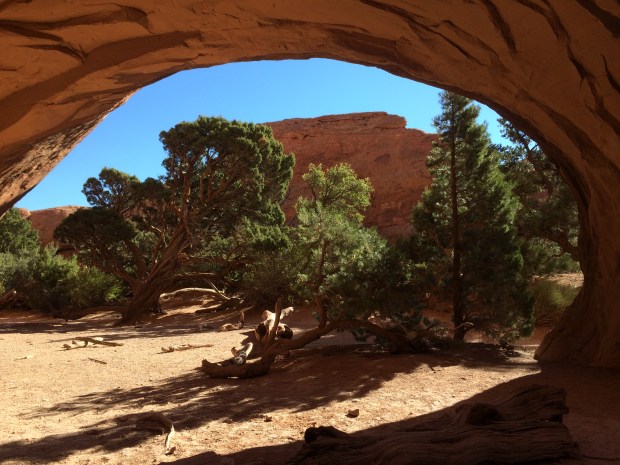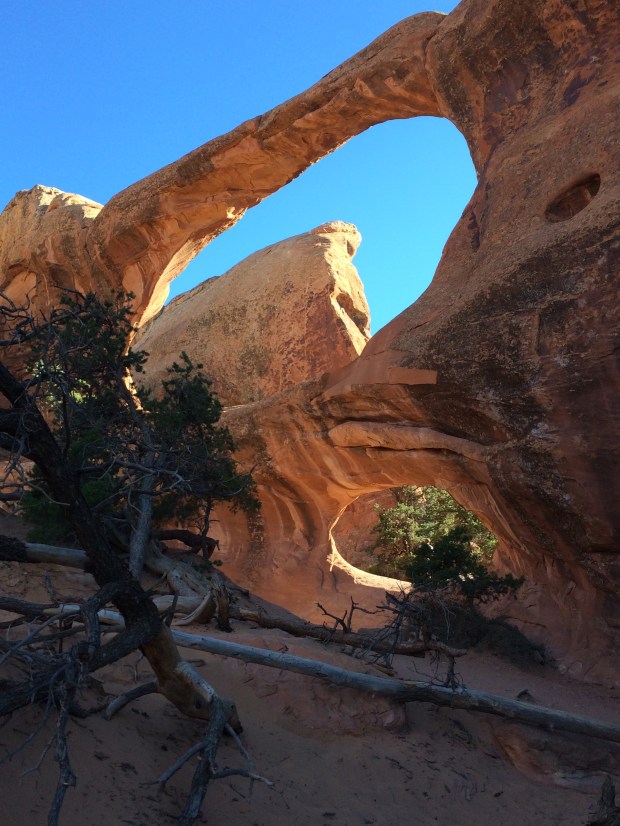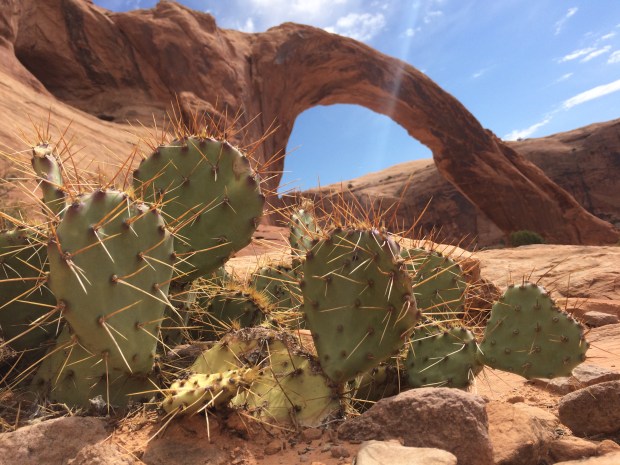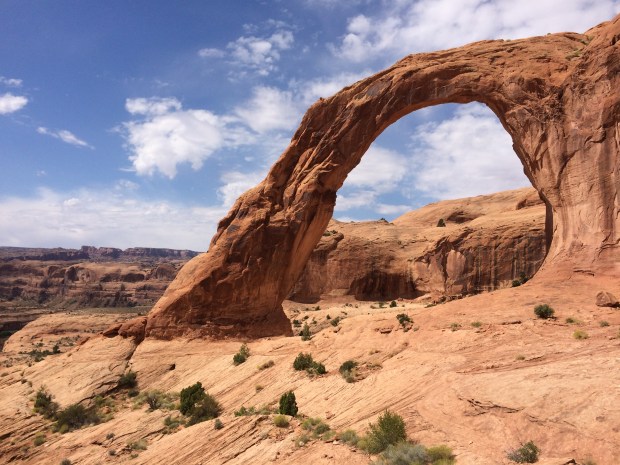When planning a trip to Southern Utah, it’s hard to go wrong when deciding between the five National Parks that span the area. Each park is quite unique, and all are spectacular. As the smallest of the National Parks in Southern Utah, Bryce Canyon National Park is suited perfectly for visitors who are dealing with a time constraint but would still like to experience nature and take in incredible views.
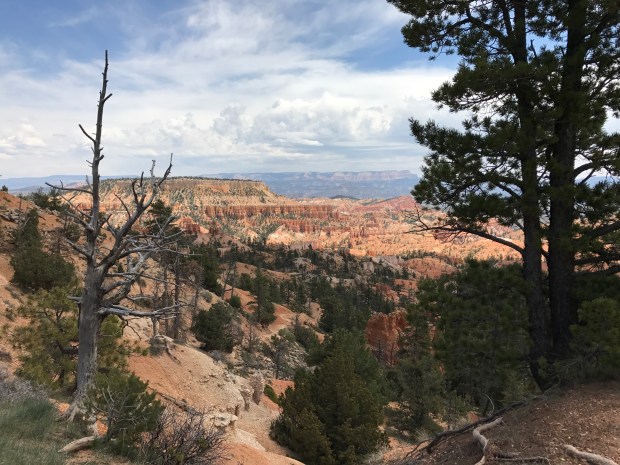
Bryce Canyon as seen from the Rim Trail
On a recent adventure, a good friend and I spent 24 hours in Bryce Canyon and can confidently say that we saw and explored a great deal of the park. While the park is small (only 18 miles long with paved roads from north to south) there is plenty to explore and visitors could easily spend several days in the National Park.
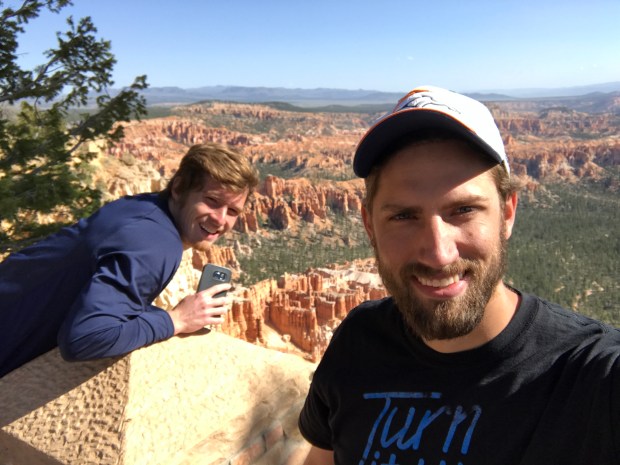
Durant and I at Bryce Point
My friend, Durant, and I planned to backpack Riggs Spring Loop Trail, an 8.6 mile loop out of Rainbow Point in the southern-most part of the park, and were also intent on stopping at as many viewpoints and exploring as many of the short hikes as we could.
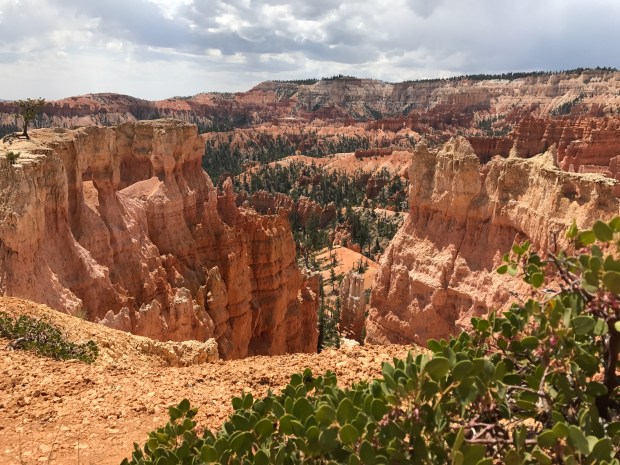
Taken near Sunrise Point along the Queens Garden Trail
A few notes on backpacking the Riggs Spring Loop: 1) backcountry permits are required and can be purchased at the Visitor Center for $5 per person, 2) backcountry camping is only permitted at designated campsites, of which there are four along the Riggs Spring Loop, 3) reservations may only be made at the Visitor Center, and only up to 48 hours in advance.
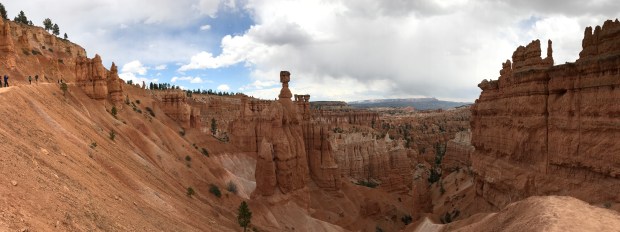
Taken near Sunset Point. The large hoodoo in the center of the photo is appropriately named, “Thor’s Hammer”
We arrived to Bryce Canyon National Park and the Visitor Center just before noon on a Saturday in the spring and had no problem securing one of the campsites along Riggs Spring Loop for that night.
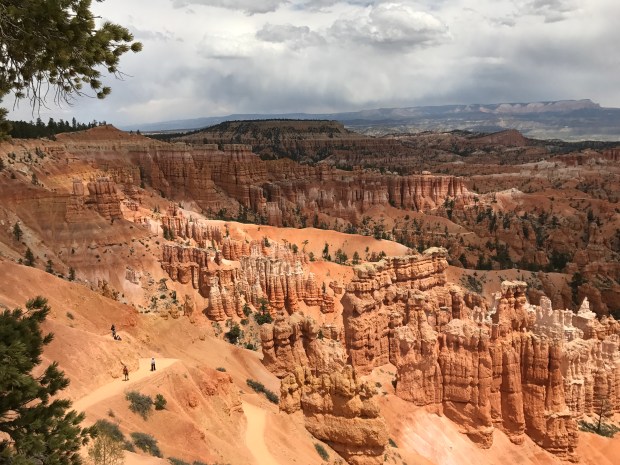
Taken from the Rim Trail, close to Sunset Point. Afternoon showers are common
With a few hours to “burn” before starting our overnighter we hit as many of the viewpoints as we could on our way to Rainbow Point. Each observation point is slightly different, and all are well worth the stop.

Taken from Piracy Point, with a view of Grand Staircase – Escalante National Monument to the East
To visitors who only have a couple of hours to explore Bryce Canyon, I would recommend the four viewpoints closest to the Visitor Center: Sunrise Point, Sunset Point, Inspiration Point, and Bryce Point. I would also recommend the 1.8 mile hike along the Queens Garden Trail.
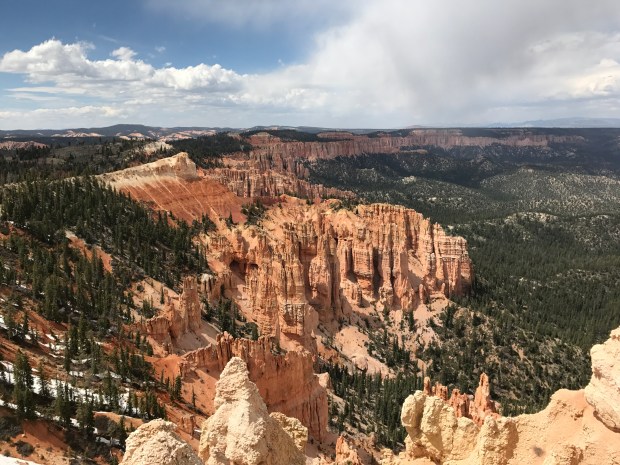
Looking North from Rainbow Point
At around 3:30 pm, and after seeing both Rainbow and Yovimpa Points, we took off along the Riggs Spring Loop Trail heading east, clockwise around the Loop.
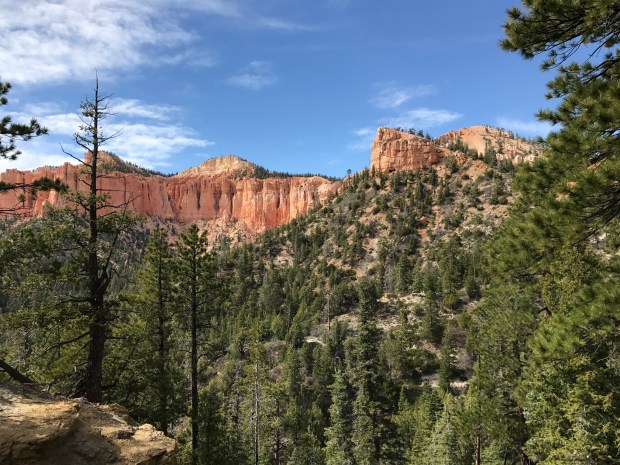
Taken from Riggs Spring Loop Trail
The hike from Rainbow Point to Riggs Spring Campsite (where we spent the night) is 5.3 miles and is all downhill. Rainbow Point is the highest point in Bryce Canyon at 9,115 feet, while Riggs Spring Campsite sits at only 7,514 feet. In this situation, what goes down must come up, and 1,600 feet of elevation gain is significant over the remaining 3.3 miles of the hike while carrying a backpack.
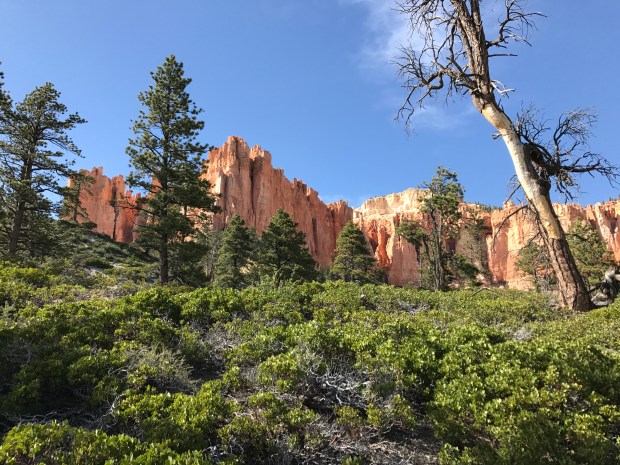
A view of Yovimpa Point from below

View from the Corral Hollow campsite along the Riggs Spring Loop Trail
We got to our campsite at about 6 pm (it’s typical to plan 2 miles per hour when backpacking), set up camp, ate our meager backpacking meals, and watched as the beautiful night sky crept over us.
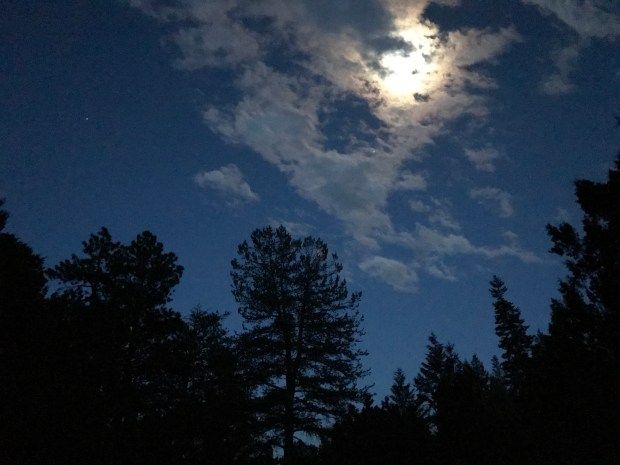
The night sky as seen from our campsite
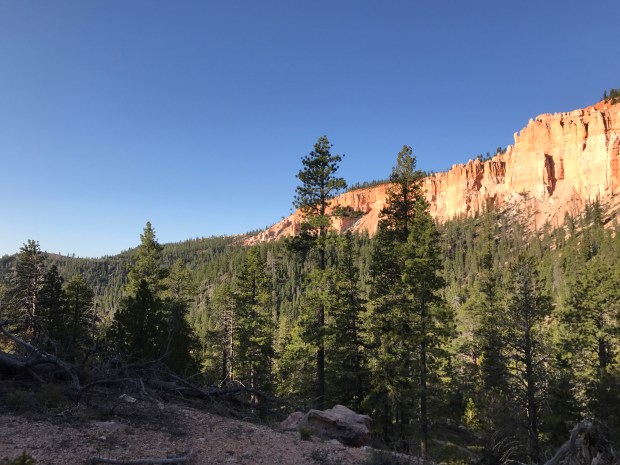
Surrounding cliffs on the climb to Yovimpa Pass from Riggs Spring campsite
After a typical night’s rest when camping (my small air mattress deflated on me several times throughout the night), we broke camp bright and early. We were out by 7:30 am, and made our way up Yovimpa Pass and back to Rainbow Point by 9 am.

The view, looking South, between Yovimpa Pass and Rainbow Point
Once at Rainbow Point we got in our car and decided to stop at the remaining viewpoints we had yet to see. Several viewpoints and hundreds of photos later, we left Bryce Canyon National Park well before noon and headed home.
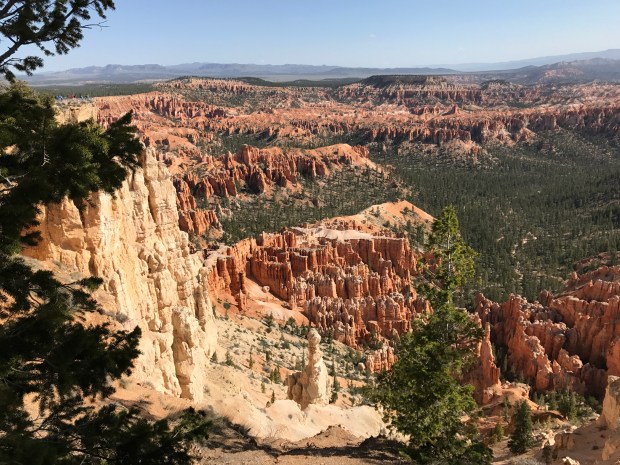
Taken near Bryce Point
Bryce Canyon National Park features a great deal of amenities including two campgrounds, a lodge with 114 rooms (lodge suites, motel rooms, and cabins), showers, laundry, a restaurant, and a general store. Just outside of the park are several motels, gas stations, etc. There is also a $30 entrance fee per vehicle to enter the park.
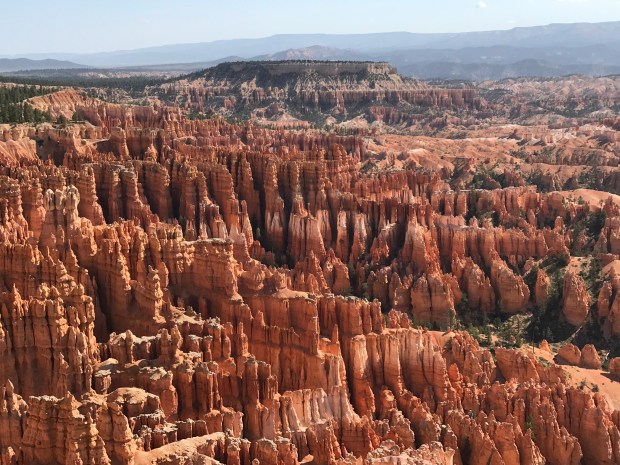
Bryce Canyon is famous for having one of the highest concentrations of hoodoos on Earth
Bryce Canyon is open year round. We visited in the spring and there were still trace amounts of snow on the ground. Other than that, the temperature was quite comfortable, although it does get cold at night.

Another view of Bryce Canyon taken from near Bryce Point
For information regarding Bryce Canyon National Park, including camping, hiking, weather, permits, etc., please visit the National Parks website.


